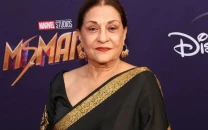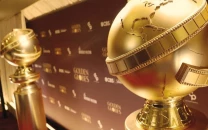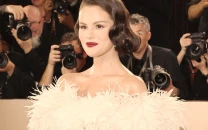Pakistan’s tour de art
A colourful insight into the modern and contemporary art and artists of Pakistan.

Book: Image & Identity- Painting and Sculpture in Pakistan 1947-1997
Author: Akbar Naqvi
Genre: Arts
Publisher: Oxford University Press
Price: Rs2,500
The Pakistani art industry is something to be very proud of but unfortunately, we have greatly considered art as a secondary entity. However, that is understandable because our society is currently addressing much bigger issues, in the wake of a deteriorating economy and an alarming security situation. As a consequence, the mainstream perception of art greatly fails to accommodate the fact that it reflects the opinions of some of our society’s best minds. Hence, a flourishing art scene directly translates to the fact that a society’s conscience and self-reflection is alive and effectively functioning.
The book Image & Identity — Painting and Sculpture in Pakistan 1947-1997 successfully manages to convey this message. It is not just pictures and words that are being depicted but the book also illustrates Pakistan’s glorious past, artists’ take on the society during their respective time periods and the humble beginnings of the country’s art scene.
Akbar Naqvi has put in a tremendous effort into this book, which is a must-have for art and literature aficionados alike. Rarely does one come across a book as detailed as this. I would regard it as an encyclopaedia for our national art, which can effectively be utilised even for scholarly purposes. It should be mentioned here that Naqvi as an author has written for prominent newspapers on the subject for more than 20 years which therefore, establishes his credibility as a writer.
The book is laden with a plethora of illustrations of the artists’ respective works. Hence, the first time I opened the book, rather than reading it, I found myself lost in illustrations of paintings and scriptures. To top it all, they were well categorised for future references, with respective titles, years and even dimensions mentioned in an orderly manner.
Naqvi makes an interesting introduction to the book. He writes that Pakistan is inseparable from the sub-continent’s heritage and history, without which, he maintains, the country will have no identity. While categorising this as the book’s thesis, he then links this theory to Pakistan’s art history. He is of the view that artists before and after partition, which included big names like Chughtai and Sadequain, shared the same history and heritage.
In my opinion, it’s a remarkable thesis that he has taken up, because it stands true for so many other disciplines in our country, irrespective of the opposition and criticism it may face by a significant majority on both sides.
Furthermore, the concise artist biographies add another flavour and dimension, as some of them contain the most interesting stories. While reading, I came across Ismail Gulgee’s story, who rose to fame by making a portrait of Aga Khan back in 1952. It was priced the highest at an auction, hence garnering an elite market for his work.
I also liked the writing style Naqvi chose for Iqbal Hussain’s work — the artist famous for illustrating scenes from Lahore’s red light district in his paintings. He acknowledges the author for picking up a taboo subject, rather than a distinct art style, while drawing comparisons between him and writers like Manto, also labelling them both responsible for breaking several barriers.
The book, although being a bit expensive, is a treat for collectors. It is not an intense read, but will sure keep readers engaged for hours.
Published in The Express Tribune, March 6th, 2011.



















COMMENTS
Comments are moderated and generally will be posted if they are on-topic and not abusive.
For more information, please see our Comments FAQ